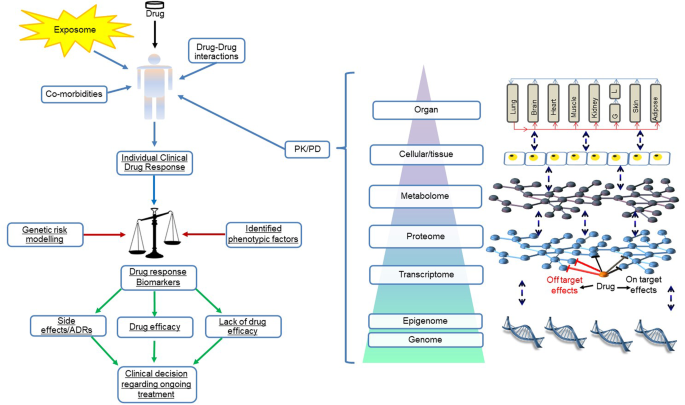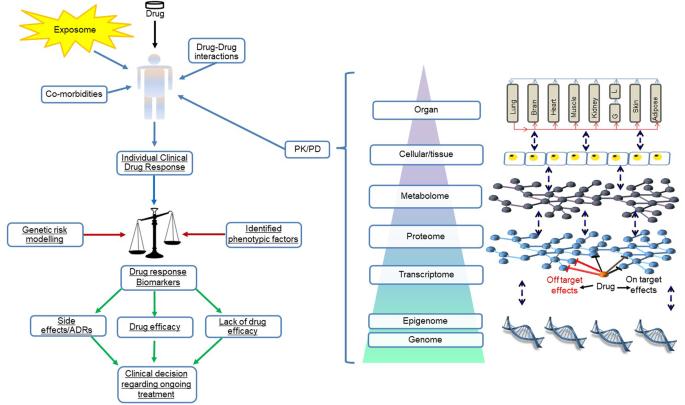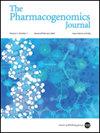Being precise with anticoagulation to reduce adverse drug reactions: are we there yet?
IF 2.9
3区 医学
Q2 GENETICS & HEREDITY
引用次数: 0
Abstract
Anticoagulants are potent therapeutics widely used in medical and surgical settings, and the amount spent on anticoagulation is rising. Although warfarin remains a widely prescribed oral anticoagulant, prescriptions of direct oral anticoagulants (DOACs) have increased rapidly. Heparin-based parenteral anticoagulants include both unfractionated and low molecular weight heparins (LMWHs). In clinical practice, anticoagulants are generally well tolerated, although interindividual variability in response is apparent. This variability in anticoagulant response can lead to serious incident thrombosis, haemorrhage and off-target adverse reactions such as heparin-induced thrombocytopaenia (HIT). This review seeks to highlight the genetic, environmental and clinical factors associated with variability in anticoagulant response, and review the current evidence base for tailoring the drug, dose, and/or monitoring decisions to identified patient subgroups to improve anticoagulant safety. Areas that would benefit from further research are also identified. Validated variants in VKORC1, CYP2C9 and CYP4F2 constitute biomarkers for differential warfarin response and genotype-informed warfarin dosing has been shown to reduce adverse clinical events. Polymorphisms in CES1 appear relevant to dabigatran exposure but the genetic studies focusing on clinical outcomes such as bleeding are sparse. The influence of body weight on LMWH response merits further attention, as does the relationship between anti-Xa levels and clinical outcomes. Ultimately, safe and effective anticoagulation requires both a deeper parsing of factors contributing to variable response, and further prospective studies to determine optimal therapeutic strategies in identified higher risk subgroups.


精确抗凝以减少药物不良反应:我们做到了吗?
抗凝剂是广泛应用于内科和外科的强效治疗药物,用于抗凝的费用也在不断增加。虽然华法林仍是广泛使用的口服抗凝药,但直接口服抗凝药(DOAC)的处方量也在迅速增加。以肝素为基础的肠外抗凝剂包括非分数肝素和低分子量肝素(LMWHs)。在临床实践中,抗凝剂的耐受性一般都很好,但个体间的反应差异明显。抗凝剂反应的这种变异性可导致严重的血栓形成、出血和非目标不良反应,如肝素诱导的血小板减少症(HIT)。本综述旨在强调与抗凝剂反应变异相关的遗传、环境和临床因素,并审查当前的证据基础,以便根据已确定的患者亚群调整药物、剂量和/或监测决策,从而提高抗凝剂的安全性。此外,还确定了可从进一步研究中获益的领域。VKORC1、CYP2C9 和 CYP4F2 中已验证的变异构成了不同华法林反应的生物标志物,而根据基因型确定华法林剂量已被证明可减少不良临床事件的发生。CES1 的多态性似乎与达比加群的暴露有关,但侧重于出血等临床结果的基因研究却很少。体重对 LMWH 反应的影响以及抗 Xa 水平与临床结果之间的关系值得进一步关注。归根结底,安全有效的抗凝治疗需要对导致不同反应的因素进行更深入的解析,还需要进一步的前瞻性研究来确定已识别的高风险亚组的最佳治疗策略。
本文章由计算机程序翻译,如有差异,请以英文原文为准。
求助全文
约1分钟内获得全文
求助全文
来源期刊

Pharmacogenomics Journal
医学-药学
CiteScore
7.20
自引率
0.00%
发文量
35
审稿时长
6-12 weeks
期刊介绍:
The Pharmacogenomics Journal is a print and electronic journal, which is dedicated to the rapid publication of original research on pharmacogenomics and its clinical applications.
Key areas of coverage include:
Personalized medicine
Effects of genetic variability on drug toxicity and efficacy
Identification and functional characterization of polymorphisms relevant to drug action
Pharmacodynamic and pharmacokinetic variations and drug efficacy
Integration of new developments in the genome project and proteomics into clinical medicine, pharmacology, and therapeutics
Clinical applications of genomic science
Identification of novel genomic targets for drug development
Potential benefits of pharmacogenomics.
 求助内容:
求助内容: 应助结果提醒方式:
应助结果提醒方式:


